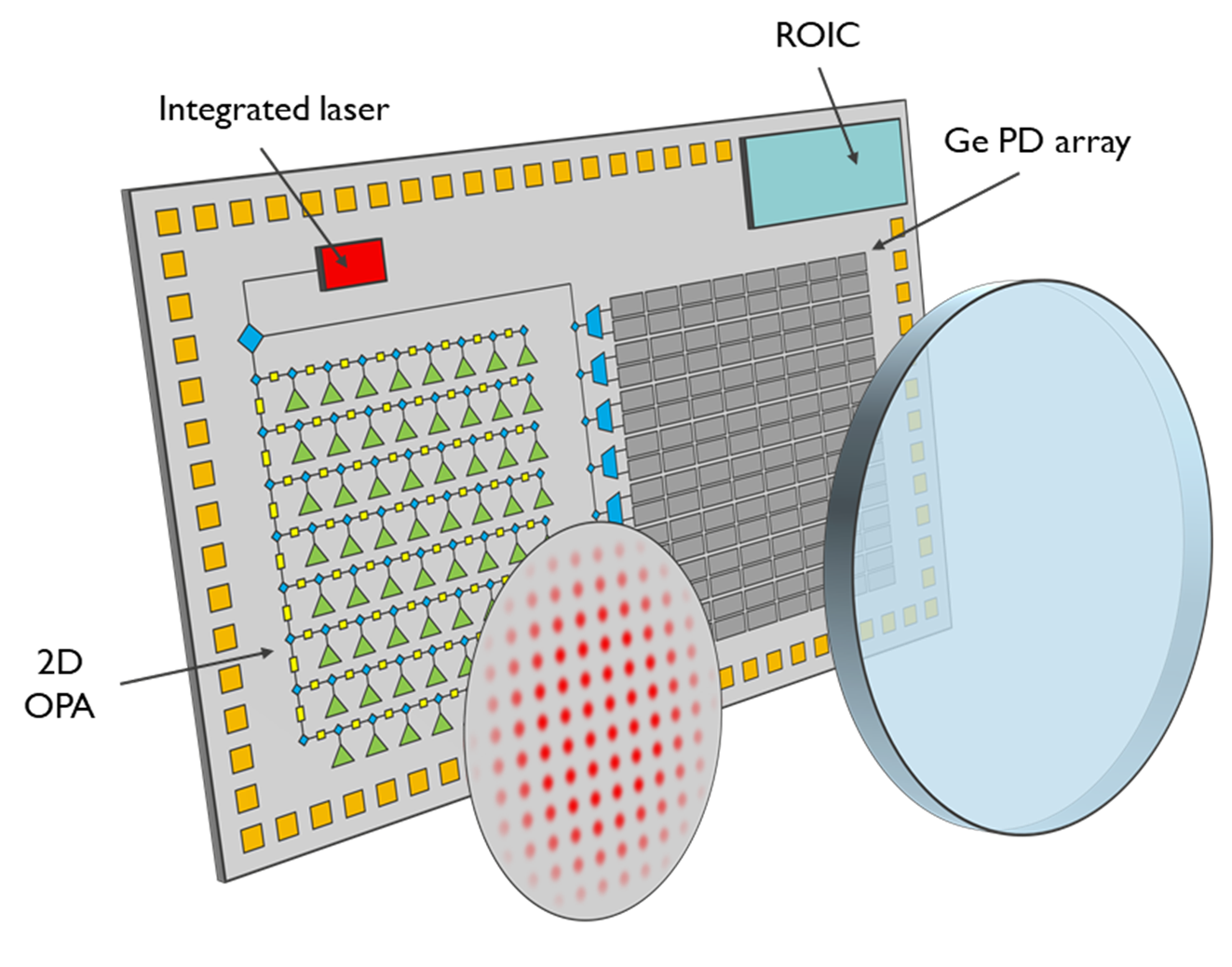Full solid-state FMCW LiDAR on SiN/SOI with optical phased array, receiver, and on-chip mixing
Leuven | More than two weeks ago
Design a novel solid-state FMCW LiDAR chip based on Silicon Photonics, working in a multidisciplinary and international team funded by an EU Doctoral Network grant
Introduction:
Light detection and ranging (LiDAR) systems enable depth imaging in applications such as automotive, robotics and industrial automation. Emerging LiDARs focus on full solid-state architectures (for illumination, scanning and detection) with frequency-modulated continuous-wave (FMCW) optical engines. The increasing interest in using coherent detection approaches in SWIR wavelengths (e.g. around 1550 nm) brings advantages such as detection range, eye safety, and immunity to environmental radiation (when compared to direct time-of-flight systems in NIR wavelengths). Furthermore, ongoing developments at IMEC in on-chip integration of light sources, solid-state beamsteering, low-power high-speed phase shifters, and photodetectors on Si/SiN photonic platforms create the route for fully integrated solid-state low-cost low-power LiDAR photonic integrated circuits (PICs).

One-chip solid-state FMCW LiDAR concept.
The project:
IMEC is seeking a PhD candidate to develop a one-chip solid-state FMCW LiDAR which will be used for the next-generation ranging applications. The PhD student will be part of an international team, in an EU-funded Doctoral Network project called NiteLiDAR. This project has received funding from the European Union’s Horizon Europe Research and Innovation Program under the Marie Skłodowska-Curie Grant Agreement No. 101120353.
The project consists of 10 PhD students from 3 universities, an international R&D organization, and a company, and has partners from four different EU countries. All 10 PhD projects are within the overall theme of photonic and electronic integrated circuits for next-generation LiDAR technologies.
This PhD project will take place at IMEC (Leuven, Belgium), with co-supervision from Ghent University. Apart from the time at IMEC, there will be secondments at the Technical University of Denmark (DTU) and at Thales (France), with additional collaboration with the Eindhoven University of Technology (TU/e). There will also be common meetings with the other 9 PhD students in the doctoral network, including 3 training schools.
As a participant in the project, the PhD student will become part of a team at IMEC with extensive expertise in design, simulation, nanofabrication, characterization, and application of photonic integrated circuits (PICs). The activities within the project will benefit from synergies with other projects in the group and department, as well as with other activities at other departments at IMEC. The main supervisor at IMEC will be Dr. Marcus Dahlem.
Responsibilities and tasks:
The PhD candidate will be involved in system modelling, photonic component simulations, PIC design and layout, optical characterization, and system demo, and will work in a large and dynamic team of experts in photonic design, IC design and system architecture. The project consists of the following main tasks:
- Definition of system specs, identification of state-of-the-art architectures, and selection of suitable on-chip LiDAR implementations
- Basic link budget calculations for selected options
- Modelling and numerical simulations of basic building blocks in IMEC’s SiN/SOI platform (OPA, grating couplers, etc.)
- Design and layout of a LiDAR chip
- Characterization of individual building blocks and implementation of simple ranging experiments
Qualifications:
We are looking for a highly motivated recent graduate holding a two-year master’s degree (120 ECTS points) or a similar degree with an academic level equivalent to a two-year master's degree in Photonics, Applied Physics, Nano-Engineering, Electrical Engineering, or related field. The candidate must have an interest in design, modeling, and characterization of optical systems. Scripting and programming skills are a plus. The candidate is expected to report regularly on the progress and to be a team player, interacting closely with other team members. Good communication skills and excellent knowledge of English are also required, as you will work in an international, multidisciplinary and multicultural team spanning several countries.
Further obligations:
The PhD candidate is expected to travel to network partners under two secondments for a typical total duration of 3-5 months. Additionally, the candidate is expected to participate in outreach activities including, but not limited to, YouTube videos, social media updates, participation in public events and campaigns, as well as dissemination to popular press. Furthermore, due to the mobility rules of the Marie Skłodowska-Curie program, the applicant must not have resided or carried out their main activity (work, studies, etc.) in Belgium for more than 12 months in the 36 months immediately before their recruitment date.
Selection process and appointment:
NiteLiDAR is open to researchers regardless of gender, religion, ethnicity, disability, sexual orientation, political views, language, age and nationality. Applications from highly qualified applicants from outside the EU will thus be equally considered to other applicants. The integration of refugees is an EU priority and we will ensure equal opportunities to the researchers whose scientific careers have been interrupted. To ensure a gender balance in the project and work towards the Commission’s own policies on narrowing the gap between the genders in research, should two applicants be found to be equally qualified the preference will be given to the one that will balance the gender distribution in the entire Network. The salary and appointment terms are consistent with the current rules for PhD degree students. The workplace is at IMEC in Leuven, Belgium.
Required background: Photonics, Nano-Engineering, Applied Physics, Electrical Engineering, or similar
Type of work: 10% literature study, 70% modeling and design, 20% characterization and demos
Supervisor: Wim Bogaerts
Co-supervisor: Marcus Dahlem
Daily advisor: Marcus Dahlem
The reference code for this position is 2024-149. Mention this reference code on your application form.
